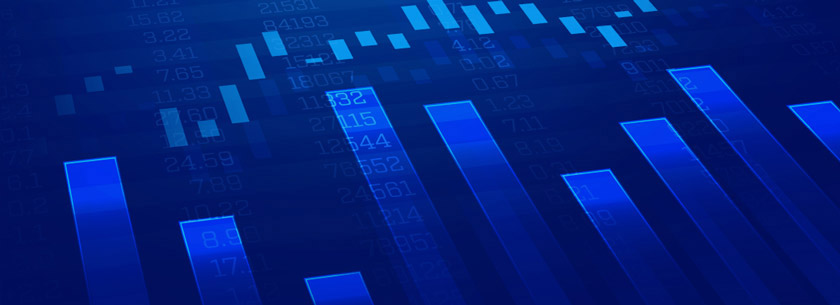
Leading and lagging indicators are one of the varieties of tools used to predict movements in financial markets and identify existing trends. Simply put, leading indicators help predict the dynamics of upcoming economic cycles, and lagging ones display patterns between existing trends and past events.
Both of these types are used in technical analysis, which is used by many investors and traders to predict changes in financial markets. This is especially useful when dealing with dynamically changing things, such as cryptocurrencies and stocks in the forex market.
For the first time, such indicators were discussed at the beginning of the twentieth century when someone came up with the idea that price fluctuations on exchanges are not random and fall under certain rules. At first, this was called the Dow theory, after the name of the first serious researcher of these laws. It was this theory that formed modern methods of working with financial markets — an in-depth analysis with subsequent behaviour forecasting.
However, leading and lagging indicators are actively used not only in technical analysis but also in other methods of working with financial markets, as well as in a number of other situations, for example, they prove to be useful when working with some economic variables and indices.
Leading indicators
Provide information about emerging trends. For example, it is leading indicators that help predict large-scale recessions and price recoveries based on retail sales statistics and, for example, the number of requests for issuing building permits and licences.
That is why they are most often used to develop short and medium term behaviour strategies. The pattern is simple: for example, the building permit means that there will be a demand for skilled workers and building materials soon, which will lead to higher stock prices of engaged companies and to increase of investment in real estate markets.
Lagging indicators
In fact, the correlation between the events of the past, even quite distant, and the current situation in the markets. With this tool, you can track extremely slow and inconspicuous trends, which may be fundamental to long-term market behaviour strategies in some cases.
Simply put, it is something like finding analogies between current events and the dynamics of events in the past. For example, if about 10 years ago, certain events caused serious fluctuations in any market, then an approximate repetition of these events in the present or in the near future can lead to exactly the same fluctuations.
Match indicators
Something in between the leading and lagging indicators, as they display the picture in real time, covering in more detail the current situation in the financial markets. As an example, the productivity of a certain sector of industry (e.g. heavy metallurgy) directly affects the price of products produced by this sector. And productivity, in turn, is also affected by many factors, starting from the price of raw materials, ending with the cost of a working hour of an average worker.
It is also worth considering that the same indicator can turn out to be an indicator of any type — depending on the context and method. An example of this situation is gross domestic product. On the one hand, this is a specific lagging indicator, which is relatively easy to track in historical dynamics. On the other hand, GDP is also used to instantly track changes in some economic indicators, e.g. average salary or inflation.
Indicators and technical analysis
As part of the technical analysis of financial markets, the described indicators are extremely convenient forecasting tools. Many experienced players are guided by the results of this analysis in their activities.
Leading indicators work as simple forecasts. Based on trading volumes and market price behaviour, you can make assumptions about further market movements. However, since we are talking about a system with a lot of variables, these forecasts are far from always reliable and timely.
An example of the main leading indicators is the relative strength index (RSI) and stochastic (RSI). In principle, even the classic “candles” on the graph of price fluctuations can be used as leading indicators. Since the very presence of such candles makes it possible to assume further market dynamics.
Delayed indicators can also be useful because they allow you to feel the “feedback” between the activities of traders in the past and the market reaction to it. An example: a fall in the value of specific stocks below the moving average clearly indicates the imminent start of a downtrend. Moreover, this decline is gradual and also predictable.
Effectively working with two types of indicators at once is difficult but possible. A classic example is the Ichimoku cloud with both lagging and leading indicators on one chart.
However, it is worth clarifying that leading indicators generate a large number of false signals, so there is no strict direct relationship between them and the real situation on the market. As for the lagging indicators, they are good only for long-term forecasting, but they do not allow you to quickly respond to sharp changes in trends. They provide reliable but not timely information, therefore the profit is guaranteed, but much less than possible.
Indicators and macroeconomics
Despite the fact that technical analysis is not acceptable in macroeconomics, many economic indicators can also be qualified as prognostic indicators. For example, unemployment rates and inflation are not directly financial, but on their basis, it is possible to predict the country economic development, as well as the situation in specific financial markets. But yes, this is also a long-term strategy.
Conclusion
Understanding how lagging and leading indicators work helps traders and investors to conduct effective financial activities. In addition, they can be used as a tool for predicting the situation in certain sectors of the economy and even in the country as a whole. Therefore, the study of these tools is an obligatory step for every novice player in the cryptocurrency, securities and forex markets.




